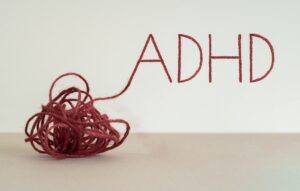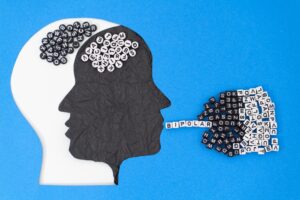A child who can’t sit still and an adult who can’t stay organized may be experiencing the same underlying condition—attention-deficit/hyperactivity disorder(ADHD). This neurodevelopmental disorder affects focus, impulse control, and emotional regulation differently across the lifespan. Understanding the nuances of ADHD diagnosis in children vs. adults helps families recognize symptoms, seek evaluation sooner, and begin effective treatment at any age.
At Lone Peak Psychiatry, we assess and treat ADHD in children and adults, helping patients manage challenges, build strengths, and improve daily functioning through evidence-based care.
How ADHD Looks in Children vs. Adults
The same core symptoms—hyperactivity, impulsivity, and inattention—appear in children and adults but manifest differently across ages.
In Children
ADHD symptoms are often easy to see. A child may constantly move, talk excessively, interrupt others, or struggle to follow directions. Classroom settings frequently reveal difficulty staying seated or completing assignments. Parents might notice emotional outbursts, forgetfulness, or quick shifts in attention from one activity to another.
In Adults
Hyperactivity often transforms into an internal sense of restlessness. Instead of running around or fidgeting, adults may feel mentally “always on.” Challenges shift toward executive-function skills: organization, time management, and emotional regulation. Adults with ADHD frequently describe procrastination, chronic lateness, or difficulty maintaining consistent motivation.
While a child with ADHD might get in trouble for blurting out in class, an adult with ADHD may struggle to finish tasks, manage finances, or balance multiple responsibilities. Both experience real impairment—but it often hides beneath different behaviors.
Why the Diagnosis Process Differs
The diagnostic criteria for ADHD remain the same across age groups, as outlined in the Diagnostic and Statistical Manual of Mental Disorders (DSM-5). Still, the way professionals gather information differs between children and adults.
For Children:
- Parent and Teacher Reports: Caregivers and teachers provide crucial observations through structured checklists and rating scales.
- Developmental History: Clinicians review milestones, academic progress, and social interactions to understand when symptoms began and how they’ve affected growth.
- Direct Observation and Testing: A psychiatrist or psychologist may observe the child or use cognitive assessments to evaluate attention, impulse control, and emotional regulation.
For Adults:
- Self-Reports and Reflection: Adults complete detailed questionnaires about their habits, work performance, and relationships.
- Collateral Information: Input from spouses, family members, or colleagues can validate patterns of distraction or impulsivity.
- Differential Diagnosis: Because ADHD shares traits with anxiety, depression, or sleep disorders, clinicians rule out other causes before confirming ADHD.
In short, a child’s ADHD diagnosis often relies on external observations, while an adult diagnosis depends more on self-reporting and retrospective analysis.
The Challenges of Diagnosing ADHD in Adults
Diagnosing ADHD in adults can be complex. Many adults have developed coping mechanisms—strict routines, hyper-focus on deadlines, or overworking—to mask symptoms. These strategies may hide the disorder but often lead to burnout or chronic stress.
Adults also reinterpret symptoms. They may attribute forgetfulness to being “scatterbrained” or chronic lateness to “bad time management.” Because they’ve lived this way for years, it can be challenging to recognize ADHD as the underlying cause.
Complicating matters further, ADHD in adults is frequently misdiagnosed as anxiety or depression. Many adults seek help for stress or mood issues, only to discover that untreated ADHD contributes to their struggles. Women, in particular, may be underdiagnosed since their symptoms lean toward inattentiveness and emotional overwhelm rather than hyperactivity.
These nuances highlight why seeing a specialist trained in evaluating ADHD at all life stages is essential. Comprehensive assessments can uncover lifelong patterns that point toward an accurate diagnosis, even when symptoms have evolved.
The Emotional Impact of Late Diagnosis
An accurate diagnosis is more than a label—it’s a roadmap to understanding, growth, and improved quality of life. Many adults describe relief after years of frustration, finally understanding why certain tasks always felt harder than they “should.” At the same time, they may grieve missed opportunities that might have unfolded differently with earlier recognition and support.
For parents, seeing ADHD patterns in their child brings clarity. A diagnosis shows that these behaviors aren’t due to laziness or lack of discipline, but a neurological difference in how attention and impulse control develop. Early or late, diagnosis opens the door to effective treatment, self-awareness, and renewed confidence.
Seeking an ADHD Evaluation at Any Age
Whether you’re noticing signs of inattention in your child or struggling with focus and organization yourself, professional evaluation is the first step toward clarity. Our experienced providers provide tailored ADHD Therapy in Murray, Utah, using research-supported assessment tools and compassionate listening to understand each patient’s unique experience.
We coordinate closely with educators for children and their parents to ensure input from home and school is included. For adults, we explore lifelong patterns of behavior and coping strategies to build a clear diagnostic picture.
Once ADHD is confirmed, treatment plans may include:
- Medication management to regulate brain chemistry and improve focus.
- Cognitive-behavioral therapy (CBT) to support structure and emotional balance.
- Lifestyle strategies include sleep hygiene, exercise, and nutrition for brain health.
- Education and family support to help everyone navigate ADHD together.
Our mission is to help patients of all ages understand their symptoms, build practical coping tools, and experience meaningful improvement in daily life.
Understanding Is the First Step to Better Care
ADHD doesn’t disappear with age—it evolves. Whether it’s hyperactivity in a child or disorganization in an adult, recognizing the signs is the first step toward effective care. Understanding the key differences of ADHD diagnosis in children vs. adults empowers individuals and families to seek the right help sooner rather than later.
If you or someone you love may be living with ADHD, contact us today to schedule an evaluation at our Salt Lake City, Murray, or Lehi offices.







